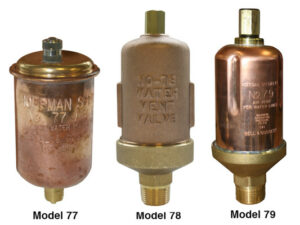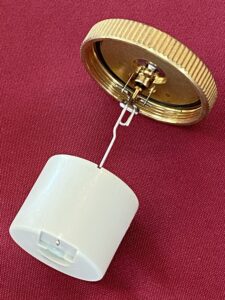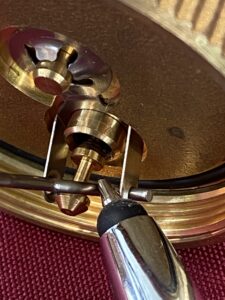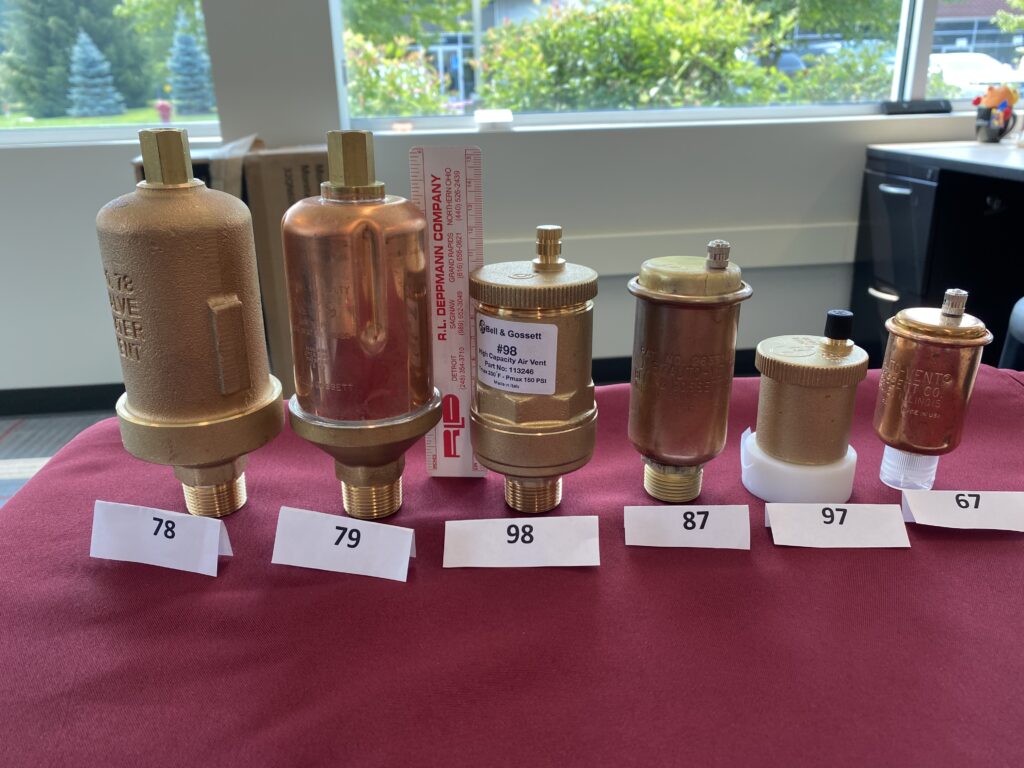Sometimes simple things can slow you down in the design of hydronic heating and cooling systems. Air vents for use in water and glycol systems are one of those things. Which vent should I use in a glycol application? Today’s R. L. Deppmann Monday Morning Minutes will offer a suggestion.
Bell & Gossett and Hoffman Specialty and Metraflex offer a variety of air vents. A question we often receive concerns the use of automatic air vents. Which should I use when I have glycol in the hydronic heating and cooling system?
How Does a Float Type Air Vent Operate?
A float type vent in hydronic systems is a simple device. There is a float with a pin on the top. When air is present in the vent body, the float and pin drop to allow air to move around the float and out a small 1/8” opening at the top of the vent.
When water enters the vent body, the float rises, and the pin closes off the opening. If you do not have good positive pressure at the vent, the float may bob a bit and cause drips of water. We recommend you have some pressure at the vent for a positive closure. That is why we use 4 PSIG at the top of the system when setting the pressure reducing valve and sizing the expansion tank.
Which Vent Should I Use with Glycol?
Automatic float type air vents come in a variety of sizes. Which would we recommend for systems with glycol solutions? You may have noticed vents in hydronic systems with streaks of pink or green down the side of them. You may even notice a small spot of pink or green on the floor under the air vent. What is happening?
Glycols sitting right at the outlet of the vent can coagulate. A small bead becomes rubbery when it starts to dry up. That small bead can keep the pin from closing properly. If that happens, there are some drips. Eventually, the opening of the vent can be clogged, and the drips stop but so does the venting.
The secret is the size of the float. Small floats have less buoyancy and less force at the pin and opening. Medium and large vents have more force to push the pin up and seat the pin.
Look at the photo above. The larger bodies have larger floats. I recommend using the B&G #87 or #98 on smaller ¾ and 1” pipes. The larger Hoffman #78 or #79 are a great choice for larger pipes and air handling units (AHU) if the budget can handle the higher costs. They have a ½” or ¾” system connection to get air into the vent quickly. They have larger floats with more force. The price range is nowhere near the larger #107A vents used at the top of the air separators.
Next week I will have a short blog on the balance of the water air vents and where they may be scheduled in a hydronic system.





